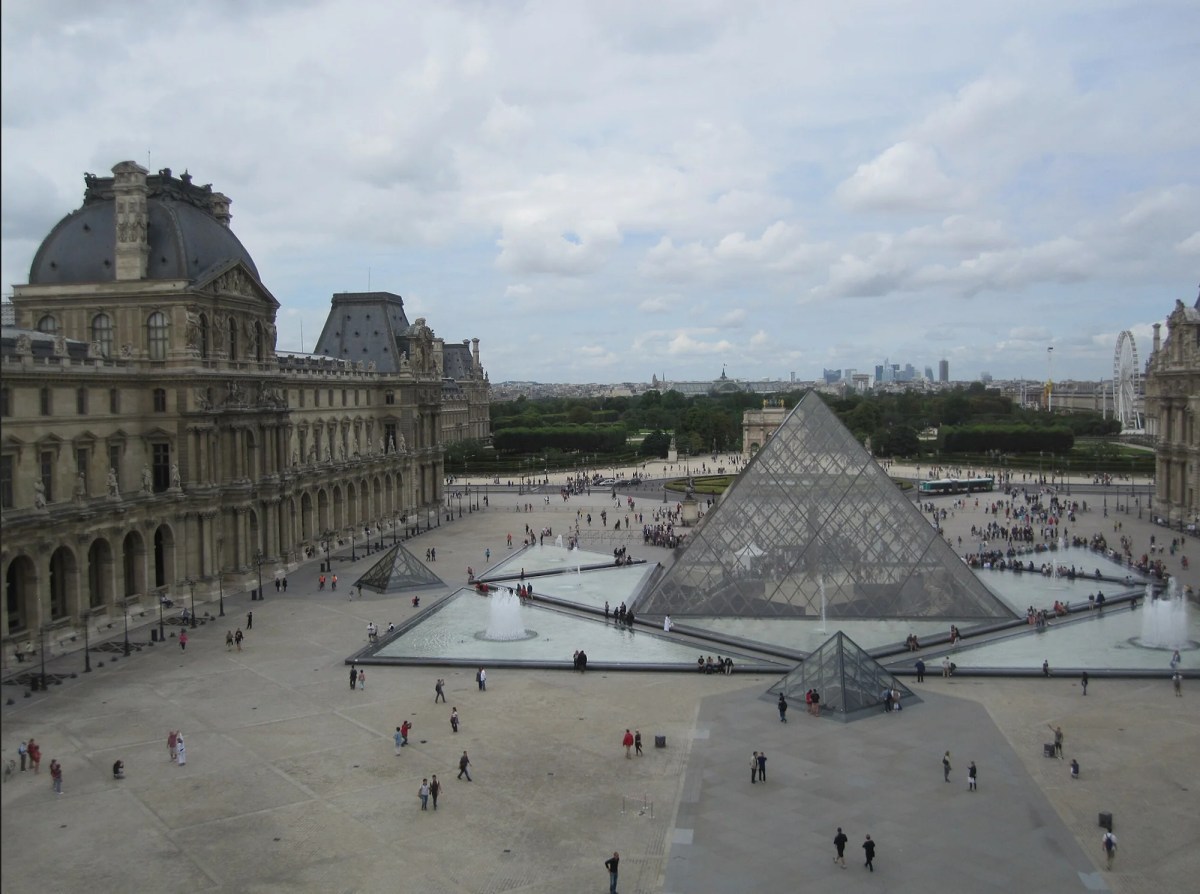Visitors were ushered from the world’s most famous art museum – The Louvre – on Sunday morning (19 October) as the realisation that a priceless, potentially history-changing jewellery heist had occured.
It only took a few minutes for a team of thieves in balaclavas to pull off this well-planned robbery.
At 9.30am (6.30pm AEDT), thieves entered the Galerie d’Apollon (Gallery of Apollo) on an upper level of the museum, which they accessed with a truck-top basket crane. After cutting through a window grille and smashing display cases, they fled on motorbikes with eight pieces from a collection of 19th century Napoleonic jewels – the remains of France’s historic crown jewels.
It was not a violent incident.
What makes this robbery so extraordinary is that it was in broad daylight with visitors already looking at exhibitions. The Louvre has recently come under criticism for over-crowding, with repeated strikes by security staff due to the volume of crowds making their job impossible.
Reports rolling out from the Paris capital have added that the robbery took place just ‘250 metres from Leonardo da Vinci’s Mona Lisa’, making this robbery all the more staggering.
The Louvre heist: what was stolen
According to official reports, eight pieces were stolen, however, one was dropped at the scene of the crime. The pieces include:
- a silver-set sapphire jewellry set featuring a diadem, necklace and matching earrings linked to Queens Marie-Amélie and Hortense;
- a matching emerald necklace and earrings gifted to Empress Marie-Louise of Austria on the occasion of her marriage to Napoleon;
- a sapphire and diamond tiara; and,
- another diadem, this one worn by Empress Eugénie, Napoleon III’s wife, along with a bow brooch.
The Regent Diamond, which is also displayed in the Apollo Gallery and is estimated to be worth more than AUD$60 million by Sotheby’s, was surprisingly left behind by the thieves.
The damaged piece that was left on the street, was an emerald-set imperial crown, worn by Empress Eugenie and containing more than 1300 diamonds. Alone, it is said to be worth ‘tens of millions of euros’.
One is guessing it was a clumsy error in the thieves’ rush to flee, but thankfully the recovered crown can be restored – and indeed will become a major drawcard of the future for the Museum once it has been repaired.
French officials respond to brazen heist
In a statement on X (formerly known as Twitter), the French President French President Emmanuel Macron said those responsible would be caught.
‘The theft committed at the Louvre is an attack on a heritage that we cherish because it is our History,’ he wrote.
‘We will recover the works, and the perpetrators will be brought to justice.’
The efficient and rapid robbery bears all the hallmarks of a professional job, according to a television interview given by France’s Culture Minister Rachida Dati.
‘They don’t target people; they enter calmly in four minutes, smash display cases, take their loot, and leave. No violence, very professional,’ she said.
Interior Minister Laurent Nunez added: ‘We’re looking at the hypothesis of organised crime. Nowadays, anything can be linked to drug trafficking, given the significant sums of money obtained from drug trafficking.’
The stolen items are expected to be broken up, despite their cultural value, and their many diamonds, emeralds and other precious stones resold on the black market, unless they were stolen to order by a collector.
James Ratcliffe, Director of Recoveries and General Counsel at The Art Loss Register (a global database of stolen art), said in a media statement: ‘The theft from the Louvre yesterday [Sunday] morning is surely the point at which any museum that does not already do so must start preparing security plans that take into account the scrap value of the objects within their collection as much as their market or cultural value. The sad fact is that these pieces were targeted because they are still assets. Even once destroyed beyond all recognition. For the thieves they are simply commodities in the form of artworks.’
Ratcliffe added: ‘In relation to the pieces stolen yesterday people should not give up hope that recovery is possible … They are not always melted down and recut, but the working theory must be that the thieves will destroy the objects. It is now apparent that more steps are going to have to be taken to protect cultural objects where the commodity value of their constituent parts is such that it brings an additional risk of theft. Prevention is better than the hope of a cure, but prevention will require investment and museums have suffered significant funding cuts in recent years. Governments need to show their support for the cultural sector by assisting financially, not just writing their hands in dismay at losses such as this.’
This is not the first theft from The Louvre. In 1911, one of its own employees notoriously made off with the Mona Lisa, while in 1998, a painting by Jean-Baptiste-Camille Corot was snatched directly from a wall. It has never been found.
Additional thefts from French institutions, of raw gold from the Natural History Museum in Paris and porcelain from a museum in Limoges, took place last month; a similar theft in Wales in early October saw Bronze Age gold jewellery and other artefacts stolen from St Fagan’s National History of Art Museum in Cardiff, though the allegeded perpetrators in that case have since been charged.
This article was updated after publication, on 21 October at 9:05am, to include comments from The Art Loss Register.





